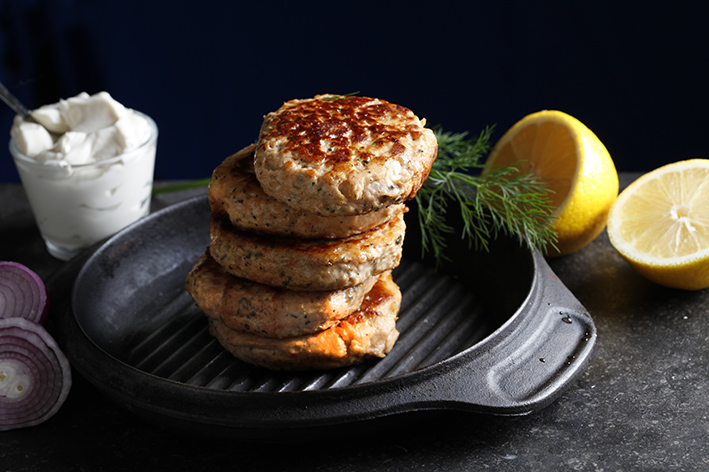Undeland – Eating more of the fish we catch
The researchers at Undeland Lab are developing a circular system that salvages refuse from the fishing industry and recovers nutrients typically lost in process waters.
As the global population continues to grow and the need for arable land is driving deforestation, our sustenance increasingly depends on the sea. And we are capturing fish at unsustainable levels. Despite this, on average, we squander 30-70% of any given caught fish due to inefficient processing methods which result in a massive waste of perfectly edible food.
In Sweden, the situation is even worse: a mere 17% of all fish brought ashore makes its way onto people’s plates. Swedish Undeland Lab has developed several technologies that reclaim byproducts which they rebranded “co-products”. These are residual raw materials that are nutritionally as valuable as the main products, i.e., fish fillets and other cuts we usually consume. Upcycling them into food could generate additional revenue for the fishing industry while reducing the catch-to-trash-can waste.
Separating fish meat from bones mechanically
Co-products such as backbone, tail, or head meat can be separated from bones manually and ground into mince. But removing these bits by hand is labor-intensive and expensive. The Chalmers University of Technology’s Lab is therefore investigating less pricey mechanical separation methods.
Fish mince, obtained from co-products, can be made into burgers, sausages, and more. Their market potential is enormous, notably in institutional kitchens where the demand for inexpensive, nutritious food is substantial. The Lab has already partnered with Sweden Pelagic AB and Pelagic Seafood Sweden AB to develop fish mince products from herring backbones.
Reinjecting nutrients into the food system and beyond
Undeland also addresses the loss of nutrients. Take herring, for example. Often consumed pickled, this cornerstone of the Swedish cuisine matures in brine for up to two years before commercialization. During this time, the fish fillets shed significant amounts of lipids, including long-chain omega-3 fatty acids, and proteins into the marinades. Similarly, the nutritional value of other seafood products such as peeled shrimps decreases as beneficial nutrients leach into process waters during manufacturing. These liquids are suitable for food- and biomedical use.
At Klädesholmen Seafood AB, Sweden’s most prominent herring producer, Undeland’s team is developing methods of extracting high-grade protein from these waters. One involves lowering the liquid’s pH and adding food-grade flocculants – carbohydrates from algae such as carrageenan and alginate – to attract dissolved nutrients. They then introduce microscopic air bubbles introduce, pushing the protein and lipid clusters to the surface where they gather in a frothy mass – a suitable ingredient for food and feed production.
The remaining process water holds further promises. Once proteins and lipids have been removed, the liquid still contains nitrogen and phosphorus. The nutritious “soup” is ideal for growing microalgae and edible filamentous fungi – yet more contributors to the impending protein shift, spawned quasi-free.
The Lab Founder Dr. Ingrid Undeland and colleague Dr. Mehdi Abdollahi patented a method that utilizes the pH shift method – commonly used to extract protein from soybeans – to produce cold-pressed fish oil and protein ingredients from filleting co-products. They are also researching how to cull collagen from fish cartilage and skins during the same process.
Undeland’s value chain is relatively easy to replicate on a global scale.
